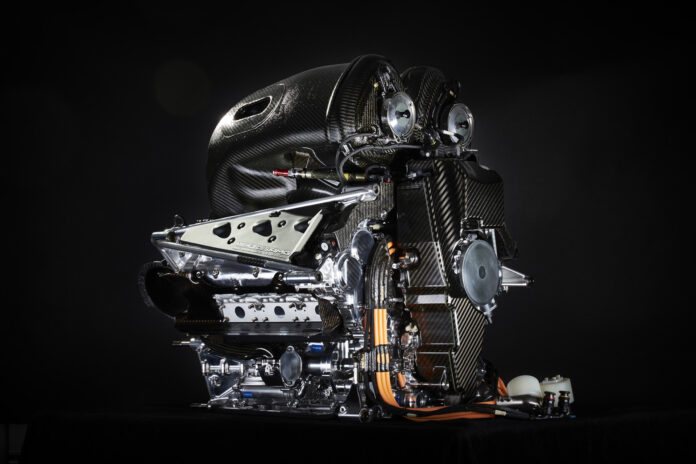Modern Formula 1 engines are capable of generating up to 1,000 hp from just 1.6 liters of displacement. Engineering Explained has created a video that breaks down the intricate details to reveal the secrets behind F1 engines that make this incredible power output possible.
Technically, Formula 1 cars are equipped with “power units” rather than traditional “engines.” This power unit consists of a 1.6-liter turbocharged V-6 as well as two motor generator units. A MGU-K (Motor Generator Unit-Kinetic) and MGU-H (Motor Generator Unit-Heat).
Both the MGU-H and MGU-K function to harvest energy, albeit in different ways. The MGU-H is powered by excess exhaust flow from the turbo, which would typically be bled off by a wastegate. This unit captures energy that can be stored in a battery pack, utilized to spin the turbo when off the throttle, or channeled directly to the MGU-K.
The MGU-K is attached to the crankshaft and can provide up to 160 hp to assist in propelling the car. Also it can facilitate regenerative braking to recover more energy.
2023 Formula 1 Bahrain Grand Prix
Despite the 160 hp provided by the MGU-K in short bursts when the battery pack is fully charged. However, the gasoline engine remains the main engine responsible for powering the car. Additionally, they operate with a limited amount of fuel due to a ban on refueling in F1. The flow rate from the fuel cell is dictated by the rules and is capped at a maximum of 100 kg/h. This effectively causing the power output to peak at 10,500 rpm despite engines being allowed to rev to 15,000 rpm.
Teams assert that the fuel utilized in F1 is akin to standard pump gasoline, ensuring that no unfair advantage is gained through fuel composition. However, F1 engines are renowned for running significantly more efficiently than typical road car engines. Mercedes-AMG has claimed that its engines have achieved over 50% thermal efficiency, signifying that at least half of the potential energy in the fuel is utilized to propel the car. A cool feature of their engine includes a turbo that is split in half.
Most road car internal combustion engines struggle to achieve 35% thermal efficiency. F1 engineers have adopted various strategies to attain higher levels of efficiency. One such approach involves pre chamber ignition, which allows for a leaner air fuel mixture ideally suited to F1’s fuel-flow limits. This feature is currently utilized in Maserati’s 3.0 liter twin turbo V-6.
Another efficiency enhancing measure is the allowance of compression ratios of up to 18:1. Although it remains uncertain whether teams are operating at this upper limit, it provides room for efficiency gains. Higher compression ratios are known to be more efficient, and F1 cars are likely running higher than conventional road cars. These higher ratios reap the associated power benefits.
Furthermore, turbo boost plays a crucial role in power generation. High levels of boost in road cars aid in producing significant power from small engines. The scenario in F1 is more complex as F1 engines operate with varying levels of boost depending on the air fuel ratio. These also include potential adjustments based on the specific circuit requirements.
The overall efficiency of the entire package is what enables F1 power units to achieve such impressive power outputs from minimal displacement. In addition, modern F1 power units do so without certain features commonly found in road cars. Items such as variable valve timing etc. are not used, making them a true marvel of technological innovation.
Watch the video above for an in depth analysis of the secrets behind F1 engines that drive F1 cars.
